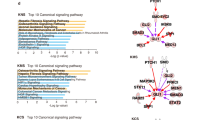Background: Keloid scars are benign fibrous proliferations in the dermis that arise after dermal trauma. The scars are raised in appearance and extend beyond the boundaries of the original wound. Scarring in predisposed individuals is out of proportion to the severity of the inciting wound. Current treatments sometimes yield early benefit but scars often resume exuberant growth. The pathophysiology of keloid scars is still poorly understood. In order for new treatments to be developed, the mechanisms leading to the formation of keloid scars must be further elucidated. The search for improved experimental models is of critical importance because such models have an important role to play in both the study of keloid formation and in the development of new therapies. Objective: The objective of this article is to introduce the reader to the experimental models available for studying keloid scars and to outline the advantages and limitations of animal and tissue culture models. Conclusion: Both models may help to elucidate the pathways of keloid formation and promote development and testing of therapies. Tissue culture is better suited to studies of pathogenesis, whereas the animal models are more suitable for therapeutic testing.
Similar content being viewed by others
Author information
Authors and Affiliations
About this article
Cite this article
Hillmer, M., MacLeod, S. Experimental Keloid Scar Models: A Review of Methodological Issues . JCMS 6, 354–359 (2002). https://doi.org/10.1007/s10227-001-0121-y
Issue Date:
DOI: https://doi.org/10.1007/s10227-001-0121-y




